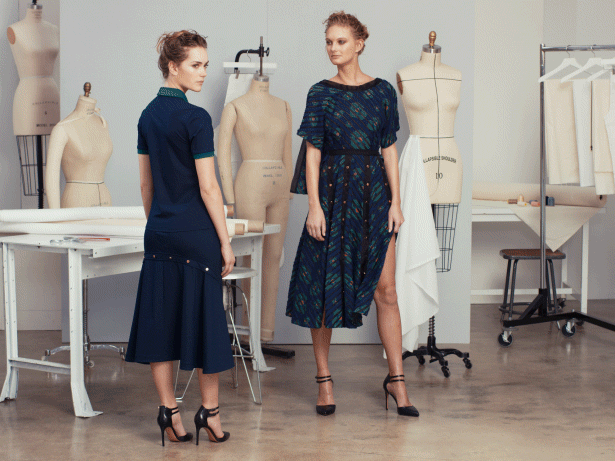In 2017, internet business sites will truly be portable sites. Planners may start to think about the site outline as versatile and adjust that outline to bigger portable PC and desktop screens. We may likewise expect Google's "Material Design" which was worked for versatile, to develop in impact.
Web composition is a moderate moving continuum. A persuasive website like Google, Apple, or Amazon will present an outline idea and website specialists will frequently join the idea before long. On the other hand maybe a client example will change, and originators will try to figure out how to react, gradually gaining from what different creators have done.
So when we portray webpage configuration patterns for a specific year, as 2017, we are truly attempting to take a preview of the present condition of web composition and envision what parts of that present state will keep on growing in significance.
The most critical change, then, could be in how fashioners consider their outlines. Before, when I considered a site, I had a tendency to envision it in its desktop shape. The responsive versatile perspective of the site was the change. Yet, on my latest activities, the site's actual character (in any event to me) is its portable frame.
1. Website Composition Is Mobile Design:
Web based business web architecture has advanced. On the off chance that you read an article about outline inclines a couple of years prior, it may have specified responsive or versatile plan.
The thought then was to change your site's desktop outline with the goal that it could be utilized on a cell phone. After some time, some even touted portable first plan. Fashioners now and then put portable CSS proclamations higher in the archive, however they presumably still thought about the site as its desktop rendition.
For 2017, turn that thought on its head. For some online stores, most website guests (if not most clients) will utilize cell phones to shop. This implies sites will be intended for versatile and made responsive or versatile for bigger screens. Creators will think about the site in its versatile frame.
Here are a couple of conceivable cases of this pattern played out on desktop screens.

- More sites will use hidden (hamburger) menus. This has been the trend for a couple of years. It will become more popular.
- Sites will use the full width of the screen. Mobile designs often fill most of the horizontal space, using relatively small gutters. Look for this on desktop designs, too. Relatively fewer pages will be centered with lots of white space.
- Large images, buttons, and icons. Large finger-friendly icons from mobile designs will be enormous on desktop screens.
2. Material Design’s Influence Grows:
Google discharged its Material Design theme in 2014, on Android gadgets. Material Design was a path for Google to in any event impact if not control how Android applications and interfaces looked and carried on. It was an approach to mark, maybe, Android.
Material Design was additionally a really natural approach to lay out a portable application or an internet business site.
Many online stores have already adopted card-like layouts (which is central to Material Design) and responsive animations and transitions (also part of Material Design), and these will only continue in 2017.
Expect Material Design’s influence to grow in 2017 as more sites adopt it or borrow from it.
3. Long Scrolls and Lazy Loading:
On a cell phone, it can here and there bode well regarding page stack times and execution to add items to the present view as opposed to stacking a totally new view or page.
Thus, search for website specialists to make pages that look to awesome lengths, stacking objects (think partitions about the page) just as they are required.
An item class page on a web based business website is a decent illustration. In 2017, a page may stack with, say, 10 items accessible. As the client scrolls (swipes vertically), the page will keep on adding more items. A customer could see 50, 100, or more items before being requested that heap another page.
4. Hamburgers On the Left:
This one will be a little and inconspicuous change: Hamburger menus are moving to one side. In the event that a website specialist utilized the Bootstrap system and took after the Bootstrap 3 Navbar illustration, that outline tended to wind up with a burger menu on the correct side of the route.
Heaps of sites took after this example. However, Google and other driving destinations have begun setting their burger menus on the left so that those menus are among the primary things a client finds on the page, notwithstanding when he is utilizing an assistive gadget like a screen peruser.
5. Cinemagraphs, or the Return of the GIF:
The enlivened GIF picture might make a big deal about a rebound in 2017, but in a more unobtrusive frame called the cinemagraph.
A cinemagraph is truly a still picture, a photo to which a little, rehashing liveliness has been included. The impact is a kind of small scale video encounter more unpretentious than the activitys on Ling's Cars, yet at the same time eye getting.

Cinemagraphs may show up as foundation pictures, classification headers, landing page flags, and even item pictures. The reality of the situation will become obvious eventually if cinemagraphs support engagement and changes or on the off chance that they are only a craze.
ALL THE BEST
Visit us:
Website Design Bangalore | Website Development Company Bangalore | Web Designing Bangalore | Website Designing Companies Bangalore | Website Development Bangalore


